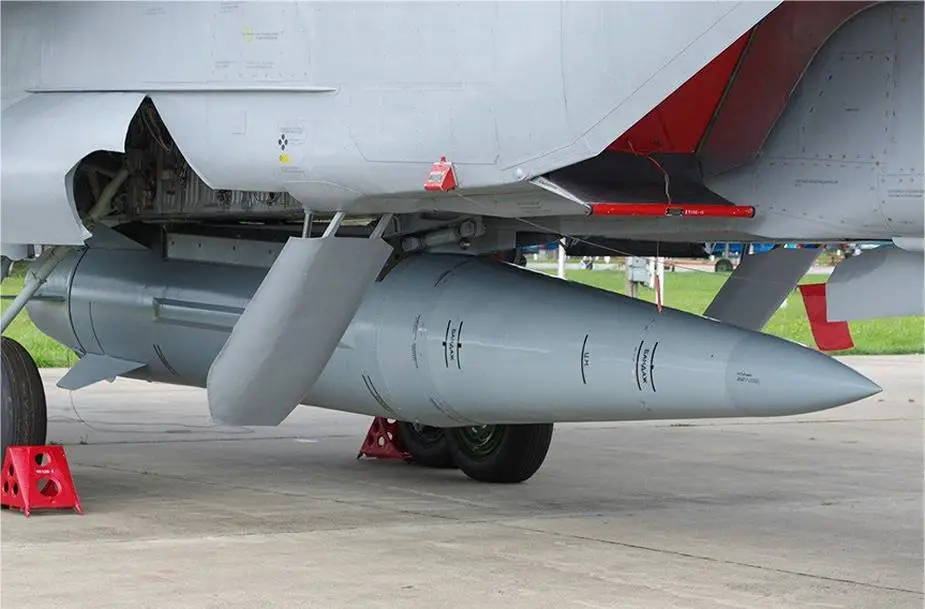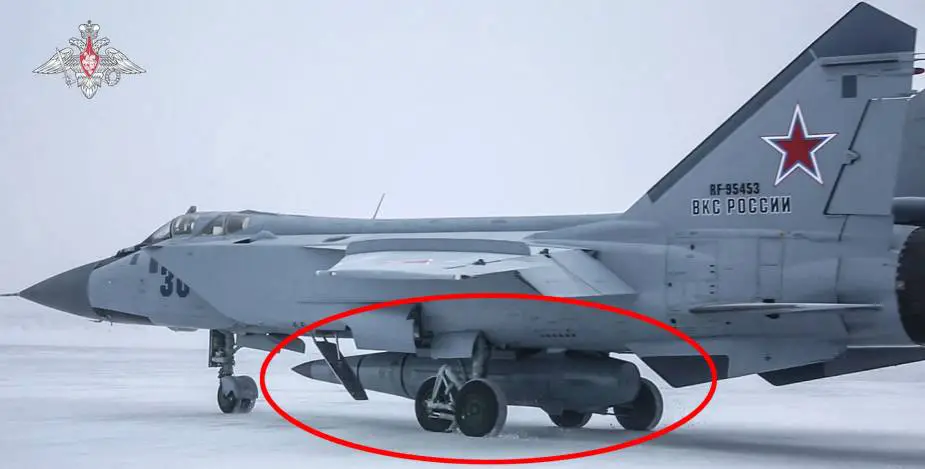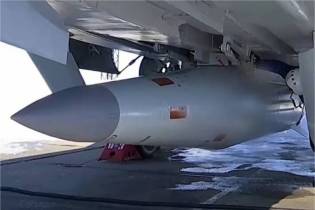- Army
- Air Defense Systems
- Anti-tank systems and vehicles
- Armored Vehicles
- Armoured personnel carriers
- Artillery Vehicles and Weapons
- Command Post
- Communication Vehicles and Systems
- Electronic Warfare
- Engineer | Maintenance Vehicles
- Infantry Fighting Vehicles
- Main Battle Tanks
- Missiles
- Tactical and Logistic Vehicles
- Radars
- Unmanned Systems
- Weapons
- Navy
- Air
Kh-47 Kh-47M2 Kinzhal Dagger - AS-24 Killjoy
Kh-47 - Kh-47M2 Kinzhal Dagger - AS-24 Killjoy
Air-launched nuclear-capable hypersonic missile - Russia

Description
The Kh-47 Kinzhal (Russian: Х-47 Кинжал), also known as the Dagger, NATO reporting name AS-24 Killjoy, is a Russian-made air-launched nuclear-capable hypersonic missile. It is a highly maneuverable and high-speed weapon designed to engage a wide range of targets, including naval and ground-based targets. The missile system is an important part of Russia's military arsenal and is seen as a response to the development of advanced missile defense systems by other countries. The missile is a product of the Russian defense industry, and its design and development are generally attributed to the Moscow Institute of Thermal Technology, the same organization responsible for developing the ground-based Iskander-M short-range ballistic missile. The Moscow Institute of Thermal Technology is a leading Russian research and development organization specializing in missile systems and propulsion technology.
The Kh-47 Kinzhal's development can be traced back to the early 2010s. The missile is believed to be a modified version of the ground-based Iskander-M short-range ballistic missile (SRBM). By repurposing the Iskander-M missile for air launch, Russia sought to extend its range and improve its ability to penetrate enemy defenses. The development of the Kh-47 is closely associated with Russia's efforts to enhance its strategic capabilities and maintain parity with other military powers, particularly the United States. As a result, the missile system was developed in secret, and little information is available about its exact development timeline or the organizations involved.
The Kh-47 Kinzhal was first publicly revealed by Russian President Vladimir Putin during his annual address to the Federal Assembly on March 1, 2018. Putin claimed that the missile had been undergoing successful tests since December 2017. In March 2018, Russia released a video showcasing the Kinzhal missile being launched from a MiG-31K fighter jet, which is a modified version of the MiG-31BM, specifically designed to carry the Kinzhal missile. The missile system was later reported to have been deployed in the Southern Military District of Russia. The Kh-47 Kinzhal was widely used by Russian troops during the Russia-Ukraine war which began on February 24th, 2022.
Kh-47 Kinzhal / AS-24 Killjoy hypersonic missile variants:
- No variants at this time.
Technical Data
| Design |
|
The Kh-47 Kinzhal / AS-24 Killjoy hypersonic missile's design and layout are derived from its ground-based predecessor, the Iskander-M short-range ballistic missile. The airframe is designed for high speeds and maneuverability. It has a conical shape with stabilizing fins at the rear. The missile's compact and aerodynamic design is crucial for achieving hypersonic speeds and minimizing its radar signature, making it difficult for enemy defenses to detect and intercept.
|
| Warhead |
|
The Kh-47 Kinzhal hypersonic missile is designed to carry a variety of warheads, depending on the mission requirements. While specific details about its warhead options remain limited due to its secretive nature, available sources suggest that the Kinzhal can be equipped with different types of warheads including HE (High Explosive), submunition, and nuclear. Exact information regarding the weight and power of the Kh-47 Kinzhal missile's warheads is not publicly disclosed due to the sensitive and classified nature of the weapon system. However, we can make some inferences based on its ground-based predecessor, the Iskander-M short-range ballistic missile. The Iskander-M missile is known to carry a warhead of approximately 480 to 700 kg, depending on the type of warhead used. According to Russian military sources report that the missile has a firing range of up to 2,000 km.
|
| Propulsion |
| The Kh-47 Kinzhal hypersonic missile uses a solid-fueled rocket motor for its propulsion system. The motor is derived from its ground-based predecessor, the Iskander-M short-range ballistic missile. Solid-fueled propulsion systems offer several advantages over liquid-fueled counterparts, including greater reliability, rapid launch readiness, and reduced maintenance requirements. The Kinzhal's rocket motor is designed to propel the missile to hypersonic speeds, which are typically defined as speeds above Mach 5 or five times the speed of sound. Hypersonic speeds are crucial for the Kinzhal to penetrate enemy defenses, as they significantly reduce the time available for interception and make the missile's trajectory more unpredictable. |
| Guidance System |
| The Kh-47 Kinzhal hypersonic missile is equipped with advanced guidance and navigation systems that enable it to accurately strike targets while maneuvering at hypersonic speeds and evading enemy defenses. Though detailed information about Kinzhal's guidance system is limited due to its secretive nature, it is believed to use a combination of INS (Inertial Navigation System) and GLONASS GPS systems. The Kinzhal uses an INS, which provides continuous guidance based on the missile's acceleration, velocity, and position. INS works independently of external signals, making it resilient to jamming and disruptions. The Kinzhal also utilizes Russia's GLONASS satellite navigation system, which is the Russian counterpart to the American GPS. Satellite navigation provides accurate positioning information that helps the missile to maintain its course and strike its intended target. |
| Combat Use |
| The Kh-47 Kinzhal hypersonic missile is designed for tactical and strategic use, with its primary mission being to engage and defeat various types of targets, including naval vessels, ground-based targets, and critical infrastructure while overcoming enemy defenses. The hypersonic missile is designed to be carried by the MiG-31K fighter aircraft and the Tu-22M3 long-range bomber. It could be also carried by the new Su-57 stealthy multirole fighters. The Kinzhal is claimed to have a range of around 2000 km, a top speed of over Mach 10, and an ability to maneuver during its flight. These capabilities are intended to make the missile difficult to intercept and allow it to evade missile defense systems. |
 |
| An MiG-31K fighter of the Russian air force carrying a Kh-47 Kinzhal hypersonic cruise missile |
Specifications
| Type | Range |
| Air-launched nuclear-capable hypersonic missile | Up to 2,000 m |
| Country users | Missile Launch Weight |
| Russia | 480 to 700 kg |
| Designer Country | Speed |
| Russia | Mach 5 |
| Type of Warheads | Altitude |
| High Explosive, submunition, nuclear | 20,700 m |
| Accuracy | Dimensions |
| 10 to 20 m | Length: 8 m; Diameter: 1.5 m; Fin Span: 1.5 m |
Details View
 |
|
 |
 |
Pictures - Video



























